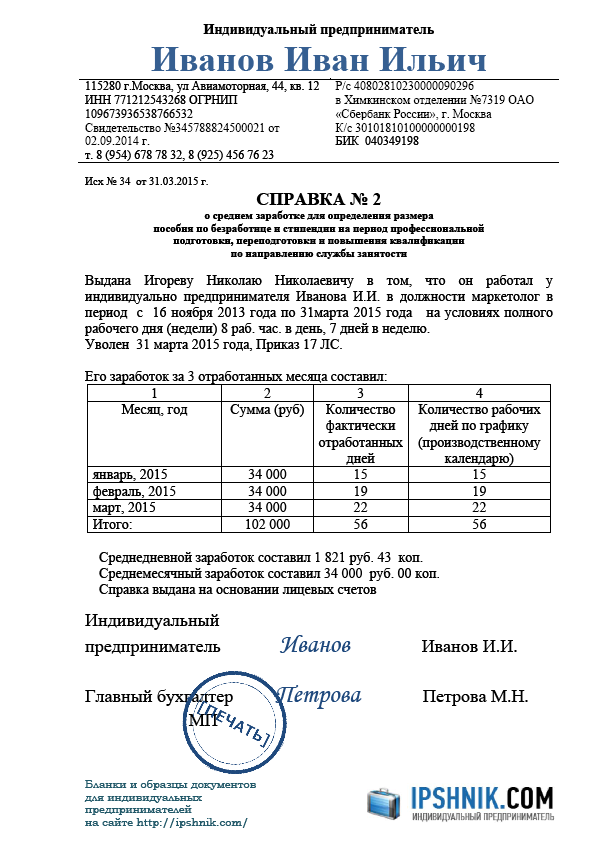How to calculate the average salary? Calculation examples reference sample
For the performance of their labor duties, employees receive wages. Its size is established by the employment contract, staffing table or may be determined by local regulations. For example, if the company has a premium, the amount of which is calculated periodically.
But there are such periods of time in which the employee does not work, or performs a function somewhat different from his main duties. But, nevertheless, even during these periods of time, the employee must receive the payments due to him. We are talking about periods when the employee is "on sick leave", on vacation, on a business trip, etc. For these periods of time, the employee is paid, respectively, disability benefits, vacation pay and travel allowance. How, in such cases, should the amount of such payments be calculated?
If in the first case the amount of wages is established by agreement with the employee, then in the second case the employer calculates the amount of payments due to the employee based on his average earnings.
How to calculate the average salary and will be discussed in this article.
When is the calculation of average earnings necessary?
The concept of average earnings is often used in the Labor Code of the Russian Federation. It is received by workers and employees in various situations. In particular, the employer must pay his employee based on his average earnings in the following, but not limited to cases:
- vacation, including educational (only if it is not a vacation without pay),
- payment of compensation for unused vacation,
- business trip,
- simple, if the fault lies with the employer (two-thirds of earnings),
- incapacity for work (disability benefit, partly from the social insurance fund),
- when referring to medical examinations,
- termination of the contract due to staff reduction (two-month allowance).
These periods of time are the very situations when the employee is kept, according to the current legislation, his average salary. In all these cases, before the employer, or rather before his accountant, the question arises of how to calculate the average earnings of an employee, and how much to pay him.
What payments are taken into account when calculating average earnings
In order to make a calculation, the accountant must take all payments related to payments for work for the 12 months preceding the calculation. It does not matter for what purposes the calculation is carried out. For vacation pay, compensation for unused vacation, downtime pay, or in other cases, to calculate the average earnings, the employer takes all the amounts that were paid to the employee, regardless of their sources. But it is worth paying attention that we mean payments that are provided for by the employer's remuneration system. These may include the following payments:
- salary at tariff rates, salaries, piece rates and so on,
- salary that was given in non-monetary form, goods or products, for example,
- allowances and allowances
- bonuses and other payments
- fees,
- additional payments for classroom management of employees of educational institutions,
- other payments depending on the specifics of the work and the discretion of the employer.
As can be seen from the list presented, all these payments are directly related to the performance of their labor functions by employees. But an employee of an enterprise and organization does not always receive only the listed payments from the employer. Holiday pay, travel allowance, disability allowance and so on. These payments are not taken into account for calculating average earnings, as they relate to periods in which the employee retained average earnings. At the same time, the periods for which they were made are not taken into account.
The legislation provides for the following list of types of payments that are not included in the calculation of average earnings along with the time periods in which these payments were made:
- payments made during periods in which the employee retains average earnings (except for breaks for feeding the child),
- the time of the employee's illness and being on maternity leave,
- downtime,
- a strike period during which the employee could not perform his job duties,
- vacations during which the employee, in accordance with the law, takes care of the disabled from childhood and children with disabilities,
- any other periods of time in which the employee was relieved of his duties, with full or partial pay.
How to calculate average earnings

To calculate the average wage, the accountant needs to add up all the benefits received by the employee in the 12 months preceding the period in which the benefits will be paid, calculated on the basis of average earnings, and divide them by the number of days worked by the employee in this period. This procedure applies in all cases, except for those when the accountant is required to calculate vacation pay. Or when you get fired. Calendar months are taken into account. That is, if, for example, an employee goes on vacation from April 15, 2015, then the period for which it is necessary to take the payments received by him for calculation begins on April 1, 2014 and ends on March 31, 2015. The calculation of the average salary is made, in this order, regardless of the mode of work of the employee. A calendar month is the period from the first to the last day of the month.
As a rule, payments calculated on the basis of average earnings are paid to employees at their own expense. But the legislation also provides for a number of positive exceptions for employers. So, in particular, the following periods are paid not from the employer's funds:
- periods of performance by the employee of his military duties (the time when the employee participates in military training),
- days in which the employee is caring for a disabled child.
How to make and compensation for unused vacation
The amount of compensation for unused vacation upon dismissal and vacation pay are calculated in the same way. To do this, the amount of payments received by the employee for 12 months is divided by the number of months worked, and then by the coefficient of the average number of calendar days in a month. Legislatively, such a coefficient is set in the following figure - 29.3. At the same time, pay attention, earlier it was equal to - 29.4. The resulting division result will be the necessary average cost of one day.
Accordingly, in the future, the accountant will need to multiply the resulting number by the number of vacation days of the employee, to calculate vacation pay, or the number of days of unused vacation, to calculate compensation upon dismissal.
Calculation of the average salary for the enterprise
In some cases, the manager sets the task of calculating the average wage for the enterprise as a whole. Such an indicator may be required for statistical reports, economic calculations and other purposes.
Often, this indicator is necessary for the tax authorities to determine how correctly an employer pays wages to its employees and withholds taxes from it. That is, in fact, whether the enterprise pays “gray” wages and whether “double” bookkeeping is maintained.
For such purposes, the following formula for calculating the average salary for the enterprise is used:
SP \u003d FOT / V
SP - average salary for the enterprise
FOT - payroll fund
B - the time period for which the calculation is made
Information about the average salary
Do not forget that the size of the average earnings is important not only for working citizens, but also for citizens who have temporarily lost their main job. Such citizens, in order to recognize them as unemployed, receive benefits and help in finding a job, are registered with the employment service.
For them, the size of the average earnings received by them at their last place of work is important. It's no secret that in addition to help in finding a suitable job, many citizens hope to receive unemployment benefits. The benefit itself is calculated on the basis of the average earnings of the unemployed, which he received before the moment of his dismissal. The average monthly salary calculated for the employment service is calculated based on the last three months of work.

Since the employment service does not have the opportunity to obtain information about the employee's earnings from anywhere else, the only source of information is the certificate of the average wage for the last 3 months at the last place of work of the unemployed. Such a certificate is a mandatory document for recognizing a citizen as unemployed.
The employer issues a certificate of average earnings for the employment service only at the request of the employee. Without fail, such as a certificate of income for the last two years, this document is not issued. The employer cannot refuse to provide such a certificate. Like any work-related documents, such a certificate must be issued at the request of the employee (former employee) within three days.
The form of this certificate is not approved at the federal level. Regional authorities authorized to regulate relations in the field of employment in their subject of the federation may establish a recommended form of a certificate that can be used in such cases.
